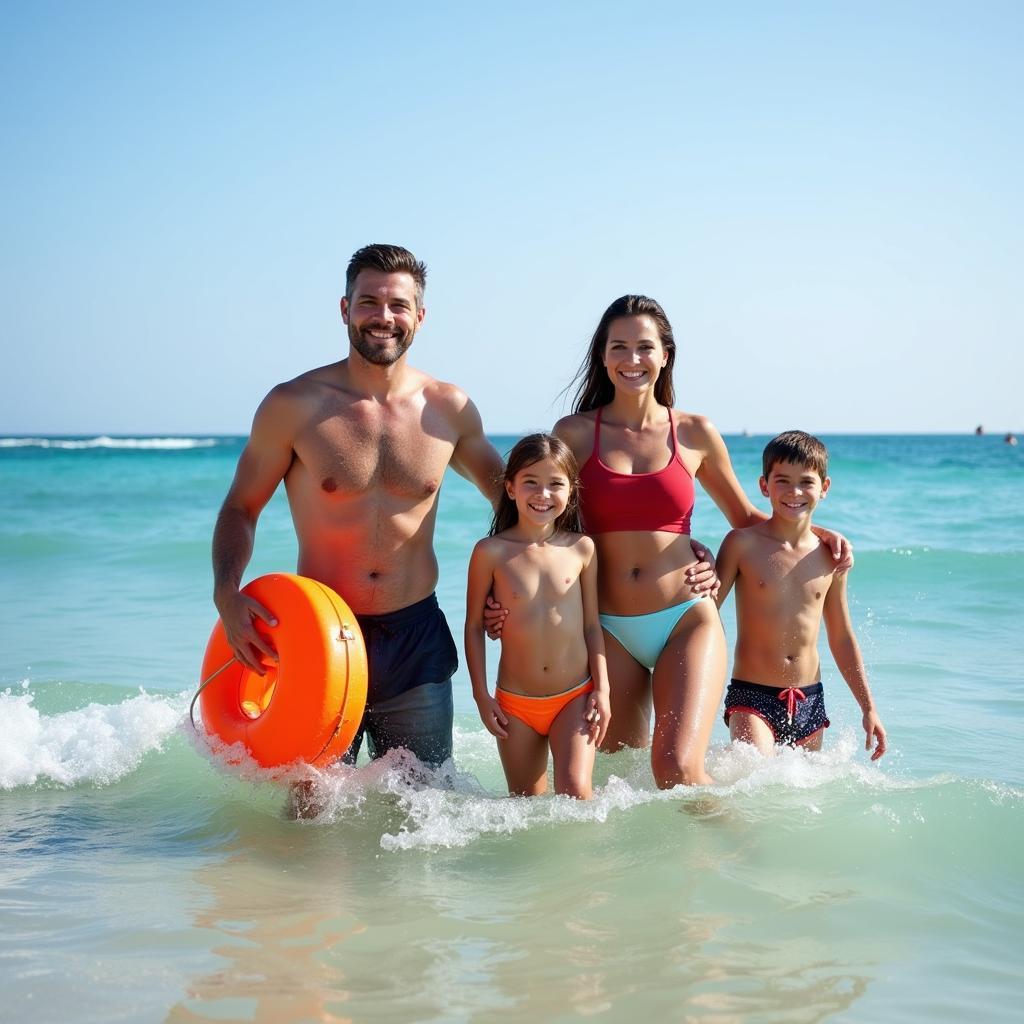No Lifeguard on Duty Swim at Your Own Risk: What Does It Really Mean?
October 10, 2024You’re enjoying a beautiful day at the beach, the sun is shining, the waves are crashing, and you’re ready for a refreshing dip in the ocean. But then you see it, a sign that gives you pause: “No Lifeguard on Duty Swim at Your Own Risk.” Suddenly, that inviting water seems a little less welcoming. What does this sign really mean, and how should it impact your beach day?
 Warning sign with "No Lifeguard on Duty Swim at Your Own Risk" text on a beach
Warning sign with "No Lifeguard on Duty Swim at Your Own Risk" text on a beach
Understanding the Risks: Why “Swim at Your Own Risk” Matters
“Swim at your own risk” isn’t just a suggestion, it’s a serious warning. It signifies that while the beach or swimming area might be open to the public, there is no active lifeguard supervision. This means you’re responsible for your own safety and the safety of anyone with you, especially children.
Unseen Hazards: The Importance of Vigilance
Even the most experienced swimmers can encounter unexpected hazards. Rip currents, sudden drop-offs, submerged objects, marine life, and changing water conditions can quickly turn a leisurely swim into a dangerous situation. Without a lifeguard to provide warnings or assistance, it’s crucial to be extra vigilant and aware of your surroundings.
Personal Responsibility: Knowing Your Limits
“Swim at your own risk” emphasizes personal responsibility. It means:
- Honestly assess your swimming abilities: Don’t overestimate your skills. If you’re not a strong swimmer or are unfamiliar with the water conditions, it’s best to stay in shallow areas or consider skipping the swim altogether.
- Never swim alone: Always have a buddy system in place, even in seemingly calm waters.
- Keep a close eye on children: Children should always be supervised by an adult who is a strong swimmer. Inflatable toys are not a substitute for supervision.
- Be aware of weather and water conditions: Pay attention to posted warnings, flags, and weather forecasts. Avoid swimming in rough surf or during storms.
Staying Safe When There’s No Lifeguard on Duty
While swimming without a lifeguard present increases the risks, you can still enjoy the water by taking some simple precautions.
Before You Go: Preparation is Key
- Learn basic water safety: Familiarize yourself and your family with basic water safety rules and how to recognize hazards.
- Check local conditions: Before heading out, check weather forecasts, tide charts, and any advisories issued for the area.
- Pack a safety kit: Bring a whistle, a first aid kit, and a flotation device in case of emergencies.
 A family enjoys a swim in the ocean with a safety buoy
A family enjoys a swim in the ocean with a safety buoy
At the Beach: Smart Choices for a Safer Swim
- Designate a “water watcher”: Take turns being the designated adult responsible for actively supervising children in and around the water.
- Swim in designated areas: If there are designated swimming zones, adhere to them. These areas are often chosen for calmer waters and fewer hazards.
- Enter the water gradually: Don’t dive headfirst into unfamiliar waters.
- Know your limits: Don’t attempt to swim long distances or in deep water if you’re not a confident swimmer.
- Stay hydrated and sun-protected: Dehydration and heat exhaustion can impair judgment and increase risks. Drink plenty of water and wear sunscreen.
“No Lifeguard on Duty” Doesn’t Mean “No Fun”
Encountering a “no lifeguard on duty” sign might seem like a buzzkill, but it’s not meant to ruin your day. Instead, view it as a reminder to be extra cautious and responsible. By understanding the risks, being prepared, and making smart choices, you can still have a safe and enjoyable time at the beach.
Remember, while there may not be a lifeguard present, your safety is ultimately in your own hands.
Frequently Asked Questions
1. What should I do if I see someone struggling in the water when there’s no lifeguard?
2. Can I still swim at a beach with a “no lifeguard on duty” sign?
3. Are there any alternatives if I don’t feel safe swimming without a lifeguard?
4. How do I know if the water is safe for swimming?
5. What are some common hazards to be aware of when swimming without a lifeguard?
Need further assistance? Contact us at Phone Number: 0963418788, Email: [email protected] Or visit: 2M4H+PMH, Nghia Thanh Ward, Gia Nghia, Dak Nong, Vietnam. Our customer support team is available 24/7.